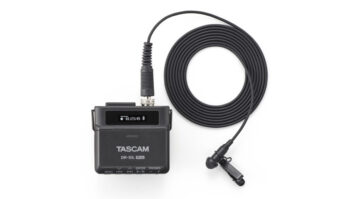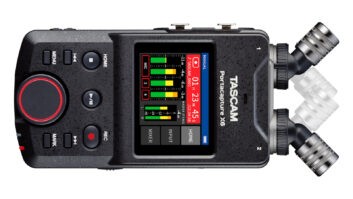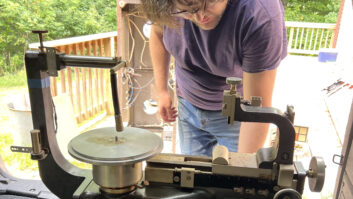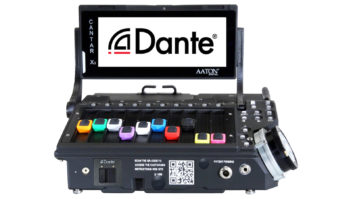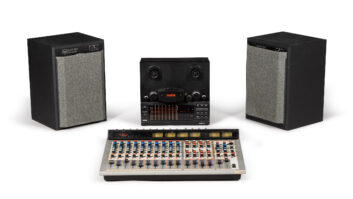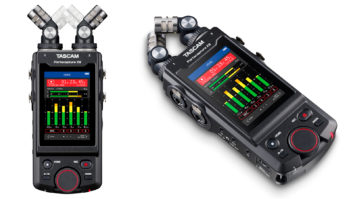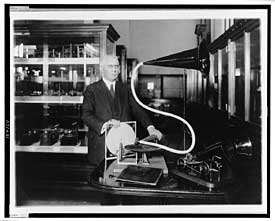
The origin of recorded audio is frequently attributed to Edison, yet Emile Berliner invented the flat-disc Gramophone that was the precursor to the modern record. Born in Hanover, Germany, Berliner (1851-1929) worked after school to help support his 10 brothers and sisters, but at age 19 was offered the opportunity to emigrate to America. He set off for the new land and ended up with a cleaning job in New York at the lab of saccharine developer Constantine Fahlberg. With America’s centennial in 1876, he moved to Washington, D.C., where he saw a demonstration of the Alexander Graham Bell telephone. Believing that its weakness was the transducer, he developed the loose-contact transmitter—essentially the carbon microphone—and sold the rights to American Bell Telephone, which hired him on as a research assistant.

Early 1888 Gramophone prototype
After a few years, Berliner left to find his own research company. In 1886, he began examining Edison’s cylinder machines, looking for ways to improve their shortcomings, such as the fragile wax grooves and the difficulty of replicating dics. Rather than continue with the cylinder design, Berliner proposed a flat-disc system in 1887 (U.S. patent #372,786) using a wax-coated zinc disc as the recording medium. After the recording machine traced the stylus movements in the soft wax, the disc would be dipped into an acid bath that permanently etched the pattern into the zinc. A separate playback machine was required, and Berliner christened the system the “Gramophone.” Electroplating the master zinc disc would result in a stamper that could be used to create copies.

Berliner ad from 1896 touts $12 Gramophone and $0.50 records.
At first, the Gramophone was only released as a children’s toy, using small discs, but with Berliner’s formation of United States Gramophone Company, the world began to see the promise of recorded sound for the masses and the record industry was born. Berliner also had numerous other inventions, ranging from gyroscopic motors to “Parquet Carpet” floor coverings to acoustic tiles (1926 patent #1,573,475). Yet perhaps one of his most lasting acts was trademarking Francis Barraud’s now-classic “His Master’s Voice” painting of a terrier listening to a Gramophone (the company had the artist paint over the original cylinder player in the picture, replacing it with a Berliner disc reproducer), which became the well-known symbol for the Victor Talking Machine Company after it acquired Berliner’s business in 1902.
